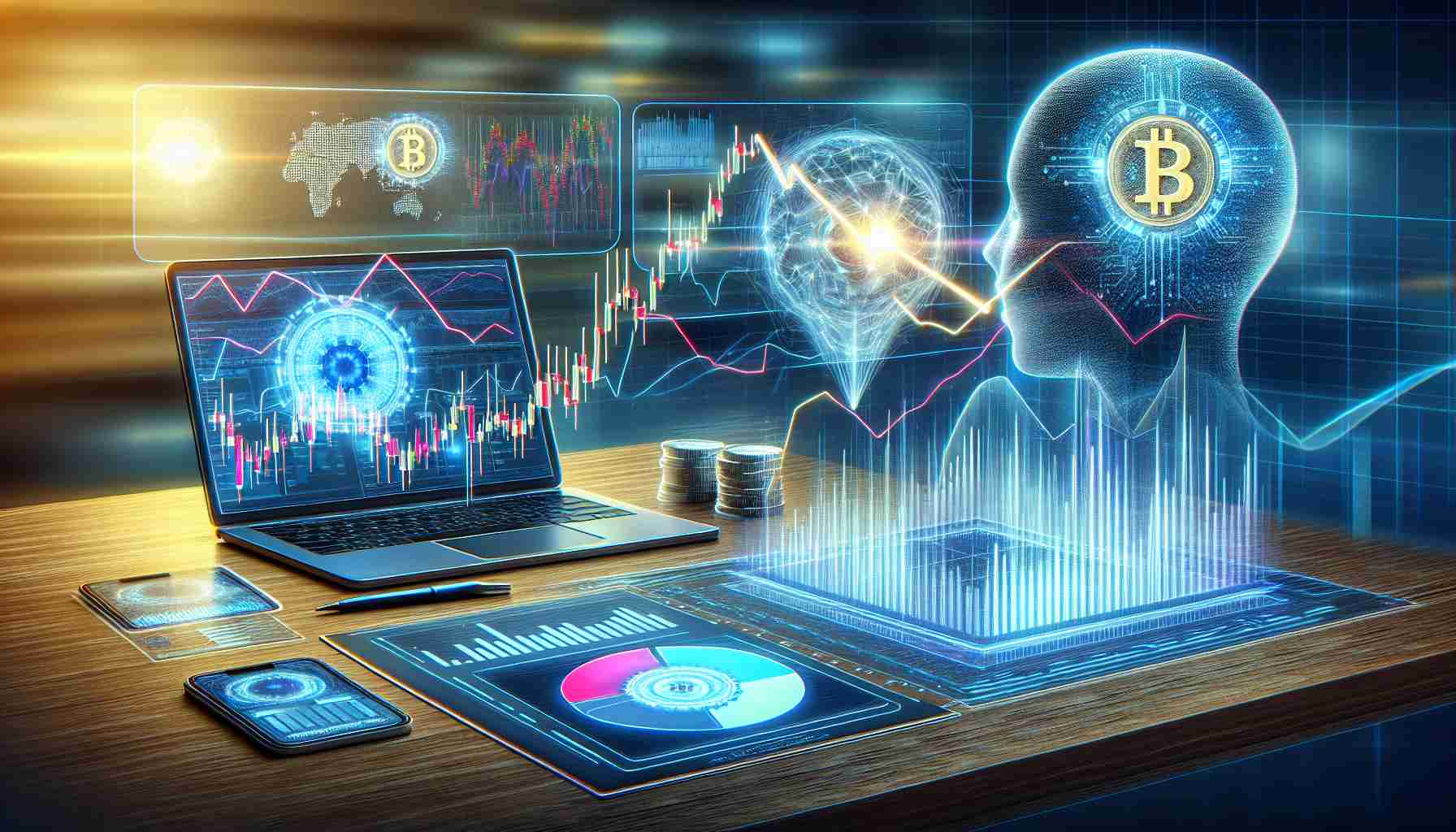- XRP, as the digital asset of the Ripple network, is central to a vibrant speculation environment in cryptocurrency, propelled by AI and Machine Learning advancements.
- AI models are key in predicting XRP’s trajectory, emphasizing its potential price volatility amid legal battles and increased global adoption for cross-border transactions.
- XRP is distinguished by its fast, cost-effective transaction capabilities and sustainable consensus protocol, enhancing its market position amidst environmental concerns.
- Pros include strategic alliances and possible legal victories, while cons involve ongoing legal uncertainties and market unpredictability.
- The future of XRP holds promise in forming inclusive financial systems, with strategic market participation and cautious optimism advised.
In the bustling world of cryptocurrency, XRP—the digital asset of the Ripple network—remains at the center of a whirlwind of excitement and speculation. With advancements in Artificial Intelligence (AI) and Machine Learning, predicting XRP’s future has never been so dynamic. As these technologies sift through colossal datasets—considering historical trends, market sentiment, and economic indicators—they reveal intriguing insights into XRP’s potential trajectory.
The Promise of AI in Forecasting
AI models are pushing the boundaries of financial forecasting, suggesting a thrilling journey ahead for XRP. With the spotlight on ongoing legal battles and the increasing global adoption of Ripple technology for cross-border transactions, forecasts indicate notable price volatility. Speculation mounts around a potential price surge by 2024, driven by expected legal victories and strategic partnerships with major financial giants.
Key Drivers of XRP’s Growth
The ripple effect (pun intended) extends beyond mere market value. Blockchain improvements position XRP as a leader in fast, cost-effective digital transactions, setting it apart in the industry. Moreover, Ripple’s consensus protocol offers a more sustainable alternative to energy-intensive rivals like Bitcoin, enhancing its appeal amidst growing environmental concerns.
Navigating Pros and Cons
Pros:
– Strategic Alliances and Legal Triumphs: Partnerships and favorable legal outcomes are poised to boost XRP’s standing and value.
– Advanced Blockchain: Offering quick, affordable transactions, XRP could revolutionize global financial exchanges.
Cons:
– Legal Uncertainty: Current legal challenges present risks to XRP’s ascent.
– Market Volatility: Cryptocurrency’s inherent unpredictability remains a factor to be wary of.
Embracing the Future
Driven by AI insights, the narrative surrounding XRP is one of transformation and opportunity. As market acceptance blossoms, XRP’s journey offers a glimpse into the potential of futuristic, inclusive financial systems. Investors and enthusiasts alike must weigh the benefits against the risks, approaching this transformative market with cautious optimism. Join the conversation as XRP navigates its path toward reshaping tomorrow’s economy.
The Bold Future of XRP: What AI Predicts About its Market Surge
New Insights into XRP’s Market Potential
In the dynamic landscape of cryptocurrency, XRP is more than just another digital asset; it’s at the forefront of innovative financial technology. As Artificial Intelligence (AI) and Machine Learning (ML) integrate deeper into financial analysis, new facets of XRP’s future are emerging, offering fresh perspectives on its market trajectory.
Three Key Questions About XRP
1. What are the Latest AI Innovations in Cryptocurrency Forecasting?
AI advancements are a game-changer in the realm of cryptocurrency forecasting. By leveraging machine learning algorithms on extensive historical and real-time data, AI provides highly nuanced predictions about market trends. These tools help investors decipher complex data sets, providing insights into XRP’s potential market movements, including the anticipation of high volatility and market responses to regulatory changes.
2. How Do Ripple’s Strategic Partnerships Influence XRP’s Future?
Ripple’s strategic alliances play a significant role in bolstering XRP’s market position. Partnerships with major financial institutions enable Ripple’s technology to be utilized in international transactions, which could potentially increase demand for XRP. These collaborations, coupled with favorable legal outcomes, may lead to significant price appreciations by 2024.
3. What Sustainability Advantages Does XRP Offer Over Other Cryptocurrencies?
In the era of environmental consciousness, XRP stands out with its Ripple consensus protocol. Unlike Bitcoin’s energy-intensive proof-of-work system, XRP offers a sustainable transaction method. This makes it an appealing choice for environmentally conscious investors and companies, potentially driving its adoption over other cryptocurrencies with larger carbon footprints.
Summarizing Pros and Cons of XRP
Pros:
– Collaborative Edge: Ripple’s ongoing partnerships and strategic expansions are set to elevate XRP’s utility and market value.
– Energy Efficiency: XRP’s consensus protocol provides an eco-friendly transaction alternative.
Cons:
– Regulatory Challenges: Ongoing legal issues could undermine investor confidence and market performance.
– Price Instability: The cryptocurrency market’s volatile nature poses investment risks.
Ripple’s Market Impact with AI Insights
AI-driven forecasting is reshaping our understanding of XRP’s potential, offering a mix of appealing prospects and cautionary tales. Investors must carefully assess AI insights, strategic partnerships, and sustainable advantages against prevailing market uncertainties. As the world of finance evolves, XRP continues to exemplify the transformative potential of cryptocurrencies amidst regulatory and environmental challenges.
For more information on XRP and its technological advancements, visit the Ripple website.









